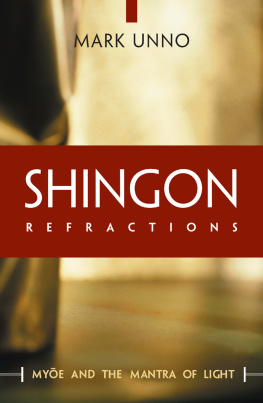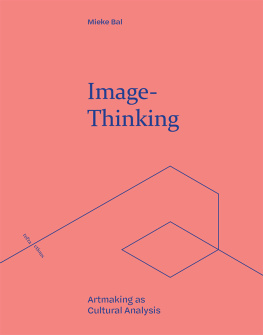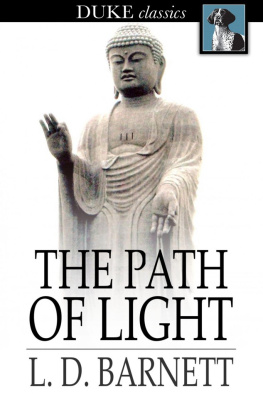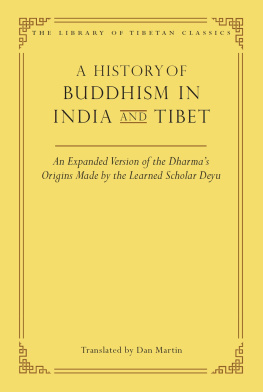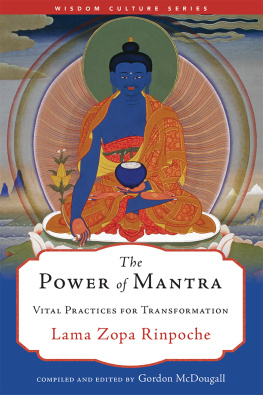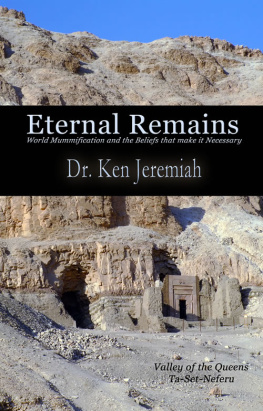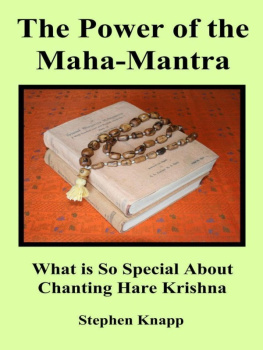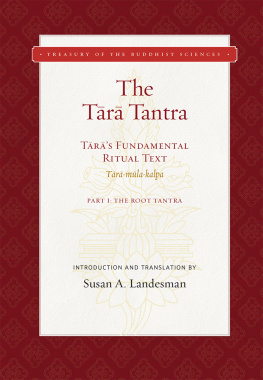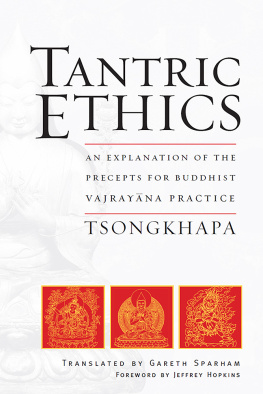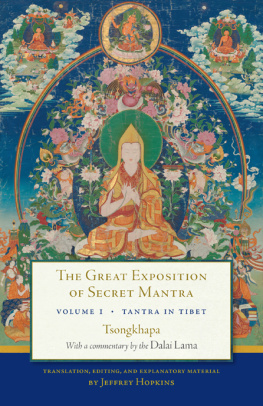SHINGON REFRACTIONS

Wisdom Publications
199 Elm Street
Somerville MA 02144 USA
www.wisdompubs.org
2004 by Mark Unno
All rights reserved.
09 08 07 06 05 04
6 5 4 3 2 1
No part of this book may be reproduced in any form or by any means, electronic or mechanical, including photography, recording, or by any information storage or retrieval system or technologies now known or later developed, without permission in writing from the publisher.
Library of Congress Cataloging-in-Publication Data
Unno, Mark.
Shingon refractions : Mye and the Mantra of light / Mark Unno.
p. cm.
Includes bibliographical references and index.
ISBN 0-86171-390-7 (pbk. : alk. paper)
1. Mye, 11731232. 2. Buddhist mantras. 3. Shingon (Sect)Prayer-books and devotionsHistory and criticism. I. Title.
BQ8249.M967U56 2004
294.3'926dc22
2004002602
ISBN 978-0-86171-390-5 eBook ISBN 978-0-86171-763-7
Cover design by Rick Snizik
Interior designed by Potter Publishing Studio.
CONTENTS
THIS WORK HAS BENEFITTED from the prodding, assistance, advice, and encouragement of many. It is not possible to list all of those people here, but I would like to express my heartfelt appreciation to the following: Carl Bielefeldt, Lisa Blasch, Karen Brock, Bernard Faure, Robert Felsing, Andrew Goble, Peter Gregory, Paul Ingram, P.J. Ivanhoe, Miyashita Seiki, Nabeshima Naoki, Pori Park, Richard Payne, Robert Rhodes, Harold Roth, George Tanabe, Yanagida Seizan, and Lee Yearley.
In addition, the following organizations have provided invaluable support for research related to this project:
Asian Studies Program, University of Oregon
Center for Asian and Pacific Studies, University of Oregon
College of Arts & Sciences, University of Oregon
Department of Religious Studies, University of Oregon
East Asian Collection, Knight Library, University of Oregon
Fukakusa Library, Ryukoku University
Harvard-Yenching Library
Open Research Institute, Ryukoku University
Reischauer Institute of Japanese Studies, Harvard University
Special thanks to editor Josh Bartok and production manager Tony Lulek of Wisdom Publications for their expertise and professionalism.
To Megumi, I wish to express my appreciation for her remarkable patience, support, humor and wisdom, and of course, to Taata, and Onyx, too.
BGDJ | Bukkygo daijiten. By Nakamura Hajime. Condensed version. Tokyo: Tokyo Shoseki, 1980. |
BGJ | Butten gedai jiten. 2d ed. Edited by Mizuno Kgen, Nakamura Hajime, Hirakawa Akira, and Tamaki Kshir. Tokyo: Shunjsha, 1977. |
DNBZ | Dai Nihon Bukky zensho. Edited by Takakusu Junjir et al. 150 vols. Reprint. Tokyo: Dai Nihon Bukky zensho kankkai, 1931. |
IBJ | Iwanami Bukky jiten. Edited by Nakamura Hajime, Fukunaga Mitsuji, Tamura Yoshir, and Konno Tru. Tokyo: Iwanami Shoten, 1989. |
IKJ | Iwanami kgo jiten. Edited by no Susumu, Satake Akihiro, and Maeda Kingor. Tokyo: Iwanami Shoten, 1974. |
KKB | Kamakura ky Bukky. Edited by Kamata Shigeo and Tanaka Hisao. Nihon shis taikei 15. Tokyo: Iwanami Shoten, 1971. |
KOJ | Kjien. 4th ed. Edited by Shinmura Izuru. Tokyo: Iwanami Shoten, 1991. |
MJ | Mikky Jiten. Edited by Sawa Ryken et al. Kyoto: Hozokan, 1975. |
MSH | Mye Shnin hen. In Ks meicho zensh, vol. 9. Edited by Yamamoto Isao. Tokyo: Heibonsha, 1930. |
MSS | Mye Shnin shiry. Edited by Kzanji tenseki monjo sg chsa dan. 3 vols. Tokyo: Tokyo Daigaku Shuppankai, 197187. |
NBSJ | Nihon Bukky shi jiten. Edited by no Tatsunosuke. Tokyo: Tokyd Shuppan, 1979. |
NDK | Nihon daizky. Edited by Nakano Tatsue. 48 vols. Tokyo: Nihon daizky hensan kai, 191921. |
SAZ | Shingonsh anjin zensho. Edited by Hase Hsh. 2 vols. Reprint. Kyoto: Daigakud Shoten, 1973. |
T | Taish shinsh daizky. Edited by Takakusu Junjir and Watanabe Kaigyoku. 100 vols. Tokyo: Taish Issaiky Kankkai, 192432. |
THE GENERAL PRINCIPLE in rendering Asian proper nouns and dates is to strike a balance between readability in any given context and consistent usage throughout.
In citing dates, years are given according to Western convention, but months and dates are given according to the lunar calendar used in medieval Japan. Thus, the twenty-fourth day of the tenth month of 1211 refers to the tenth month of the lunar calendar, not October.
Personal names are given whenever possible in terms of the native pronunciation: Fazang for the Chinese Huayan patriarch, Wnhyo for the Korean Huam patriarch, and Mye for the Japanese Kegon and Shingon monk. East Asian names are given in native order with surnames first and given names last. Exceptions to this rule are made in the case of modern scholars who regularly publish works in Western languages and list their names following Western convention.
Titles of texts, names of Buddhist sects, and the like are given with pronunciation according to multiple Asian languages wherever appropriate to facilitate ease of identification for a diverse readership.
The language to which a particular foreign word belongs is generally identified by an abbreviation, such as Ch. Chan or Skt. dhyna, indicating that Chan is a Chinese word and dhyna a Sanskrit one. All foreign terms in parentheses without such an identifier are Japanese. An asterisk precedes reconstructed Sanskrit titles of sacred scriptures.
Chinese terms have been transliterated in Pinyin. The convention in Pinyin transliteration is not to separate semantic units within a word by the use of the hyphen, as is the case with Wade-Giles; however, in the case of longer words and especially titles, semantic units within a word are separated by a space.
Terms of art have been translated as consistently as possible, but depending on the context, different translations have been used for the same term in Japanese. For example, h (Skt. dharma) has been rendered as dharma, dharmas, and phenomena, depending on the context. Mye, following conventional Buddhist usage, employs the term to mean both the Buddhist teachings about reality and the phenomena comprising reality, since in many instances the two coincide: To talk about sentient beings implies their suffering and impermanence; impermanence and suffering imply sentient beings. In some cases he is emphasizing the fact that there are phenomena involved, such as grasses, trees, or sky. In others, he is emphasizing the aspect of teaching, as when he critiques a particular understanding of the dharmas of the five skandha, the five constituent factors of reality and consciousness. Depending on the context, either the singular or plural usage is more appropriate. Also, syllable has been used variously to translate ji, ku, and jiku; although strictly speaking, ji means character and thus refers to the written form rather than the phoneme. In most cases, ji refers to the phoneme either directly or indirectly, because in Myes Shingon Buddhism the meaning of a syllable is inseparable from its sound.
Next page
